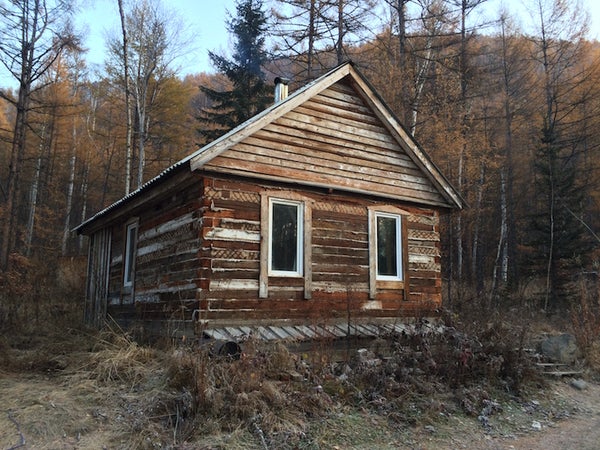This article was published in Scientific American’s former blog network and reflects the views of the author, not necessarily those of Scientific American
North of Ternei, in the province of Primorye where I conduct most of my research, there are no hotels and no restaurants. There are barely even people. There are only a half-dozen small settlements: logging towns or subsistence villages that are remote islands of humanity scattered broadly across a rolling sea of mountain and forest. When I travel to this wilderness it’s usually in a huge truck that doubles as a cabin, a hulking diesel we pack tightly with food and other supplies and assume it’s enough to sustain us. We have to make do with what we bring and count on local contacts if we’re ever in a pinch.
However, sometimes I travel north when an unexpected opportunity presents itself and do not have the luxury of planning ahead and massing supplies. In those cases, I’m especially vulnerable to the whims of the road and am truly dependent on the kindness of strangers.
For example, a few autumns ago I traveled several hundred kilometers north of Ternei with a forester, a wildlife inspector, and a biologist all headed that way on their own business. I wanted to check some camera traps I’d set out, a task that would take me a day or two, and was eager to hitch a ride when I found out others were passing that way. I quickly threw together a pack with my sleeping bag, a flashlight, and a few things to eat I had lying about.
On supporting science journalism
If you're enjoying this article, consider supporting our award-winning journalism by subscribing. By purchasing a subscription you are helping to ensure the future of impactful stories about the discoveries and ideas shaping our world today.
The plan was to make it to the logging town Amgu that day, after a stop in a hunting village along the way, a trip that should take anywhere between six and eight hours depending on road conditions. However, a cascading series of delays in Ternei meant we did not leave until late afternoon, and it wasn’t until we were already on the road that someone recognized we probably weren’t going to make it to Amgu at a reasonable hour. The wildlife inspector suggested we could try to spend the night about halfway, at a hunting base where he knew the caretaker. He suspected we had a good chance of finding enough room for us to sleep there. This seemed reasonable to everyone in the truck.
About an hour later the wildlife inspector spied a conspiracy of ravens—a half-dozen of them colluding near the road. A few of the birds nervously took wing on our approach and watched the advancing vehicle from the safety of the forest canopy.
“Slow down,” the wildlife inspector advised the biologist behind the wheel, “there’s something dead nearby.”
Indeed, the carcass of a young-of-the-year roe deer lay at the tree line—likely a recent road kill. Fatal collisions with vehicles have historically been rare here given few roads, but recent global demand for timber has driven logging roads deep into these forests. There are more than 6,000 kilometers of road in Ternei County alone today. That’s twenty-seven times the number of roads in the area thirty years ago. As a result, hulls of metal and fiberglass speed from one village to another, leaving carcasses of deer, tigers, and Blakiston’s fish owls (among others) in their wake.
The ravens had discovered this fresh deer carcass early and managed to consume most of it. The wildlife inspector scrutinized the remains and vocalized his pleasure that the question of our dinner was now solved, although to that point I had not realized that the source of our dinner had been as-of-yet undetermined.
He slid an eight-inch knife from a sheath on his belt and carved the shoulder, neck, and head from the rest of the deer carcass, placing his selection into a plastic bag and dropping the rest back for the ravens, who screamed in protest over the size of the confiscated share.
“We can also eat the tongue!” the wildlife inspector said, his excitement of the prospect thinly concealed. We continued on.
At about midnight we reached the hunting encampment where we hoped to sleep. One of the two cabins there was entirely vacant, and we settled into the bunks arranged around a woodstove in the middle. While the forester and I were both more interested in sleep we had not yet eaten, and the wildlife inspector and the biologist were keen to prepare a soup from the scavenged roe deer. They started a fire in the woodstove and began cutting bits of venison and vegetables. The wildlife inspector paused when he got to the onion.
“I don’t like the look of this thing,” said the fellow who found a mangled deer next to the road and then intended to eat its tongue. He gingerly raised the onion to his nose and sniffed suspiciously. It looked like a normal white onion to me and the biologist concurred. It was diced, sautéed, and added to the soup. The result was delicious, and we curled into our beds by one o’clock. Truly a trip of making do with what we could.
Earlier posts in this series:
East of Siberia: Arsenyev in the Land
East of Siberia: Tigers and the Art of Persuasion
East of Siberia: An Osprey, Until it Wasn't
East of Siberia: Walking Rivers With Tigers
East of Siberia: Where There Is No Tractor
East of Siberia: A Kettle of Firewood
East of Siberia: Clean Water and Healthy Living
A Russian translation of this post is available.
